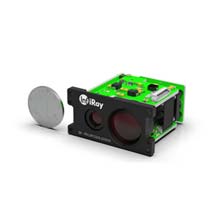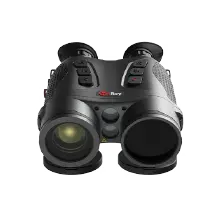Why Can Thermal Cameras Help Check Your Home's Insulation

In today's world, energy efficiency and home comfort have become paramount considerations for homeowners. One crucial aspect that directly impacts both is the insulation of a house. Insufficient or damaged insulation can lead to significant heat loss or gain, resulting in discomfort and high energy bills. By preventing unwanted heat transfer, insulation ensures a consistent temperature throughout the house, reducing the need for excessive heating or cooling. Moreover, it acts as a barrier against outdoor noise, enhances air quality, and contributes to environmental sustainability by reducing energy consumption. With these advantages in mind, assessing and maintaining our homes' insulation quality becomes crucial. Thankfully, advancements in technology have introduced an invaluable tool for homeowners - the thermal imaging camera.
The Benefits of Using a Thermal Imaging Camera for Home Insulation
1. Accurate Detection: Unlike traditional inspection methods that rely on visual or physical assessments, thermal cameras enable precise identification of insulation issues. They can detect temperature anomalies, uncover hidden gaps, leaks, or areas with inadequate insulation, such as gaps around windows and doors, poorly insulated attics, or wall cavities. By locating these heat leakage points, homeowners can take targeted actions to improve insulation efficiency.

Detecting water seepage walls with a thermal camera.
2. Time and Cost Efficiency: Thermal cameras offer a quick and efficient method to assess large areas of a home. With their ability to detect insulation problems in real-time, homeowners can save significant time and resources that would otherwise be spent on lengthy manual inspections or trial-and-error approaches.
3. Non-Invasive Approach: Unlike invasive methods such as drilling or removing wall sections, thermal cameras offer a non-destructive way to evaluate insulation performance. They provide a comprehensive view of a building's thermal characteristics without causing any damage. Through thermal imaging, cameras can reveal sections of insulation that may be missing, damaged, or improperly installed. Identifying these deficiencies enables homeowners to rectify them promptly, ensuring optimal thermal performance.
4. Visual Clarity: Thermal imaging cameras generate visual representations of temperature differences, making it easier to identify problem areas. These images, known as thermograms, provide homeowners and professionals with a clear visual reference, enabling better decision-making.

Users can choose the color palette that best suits their needs to make the thermograms clearer
5. Real-Time Results: Thermal cameras provide instant feedback through live thermal imaging. Homeowners can see the results in real-time, allowing for immediate identification of insulation deficiencies. This real-time feedback enables prompt action and prevents further energy loss or discomfort.
How to Use a Thermal Imaging Camera to Inspect Home Insulation
Using a thermal imaging camera for inspecting home insulation is a straightforward process. Here's a step-by-step guide:
1. Preparation: Ensure that the thermal camera is fully charged and ready for use. Familiarize yourself with the camera's controls and settings. It's important to follow the manufacturer's instructions for optimal performance.
2. Environment Setup: Close all windows and external doors to maintain a stable indoor temperature. It's advisable to inspect during a time when there is a significant temperature difference between the indoor and outdoor environments for better detection of thermal anomalies.
3. Systematic Inspection: Start the inspection by systematically scanning the walls, ceilings, floors, and other areas of the house. Pay close attention to corners, edges, and potential problem areas. The thermal camera will display temperature variations, indicating areas of potential insulation issues.

4. Analysis and Interpretation: Once the inspection is complete, analyze the captured thermal images. Look for temperature variations, color gradients, and anomalies that indicate heat leakage or insulation deficiencies. Seek professional guidance or consult thermal imaging resources to interpret the findings accurately.
5. Necessary Actions: Based on the identified problem areas, take the necessary actions to improve the insulation. This may involve sealing gaps, adding or replacing insulation material, or consulting professionals for further assessment and recommendations.
Homeowners have a vested interest in ensuring energy efficiency and comfort within their homes. By utilizing a thermal imaging camera for insulation checks, homeowners can take proactive steps toward achieving these goals. Thermal cameras empower homeowners with the knowledge to identify and rectify insulation deficiencies, leading to the following benefits:
1. Enhanced Energy Efficiency: Proper insulation reduces heat loss or gain, resulting in lower energy consumption. By addressing insulation issues identified through thermal imaging, homeowners can significantly improve their home's energy efficiency, leading to reduced utility bills.
2. Improved Comfort: Insulation deficiencies can lead to cold drafts, hot spots, or inconsistent temperature distribution throughout the house. By addressing these issues, homeowners can enjoy a more comfortable living environment, free from temperature extremes and discomfort.
3. Environmental Sustainability: Energy-efficient homes contribute to environmental sustainability by reducing carbon emissions. By using a thermal imaging camera to optimize insulation, homeowners play a part in conserving energy and minimizing their ecological footprint.
So why don't take an InfiRay thermal camera and have your home an inspection now?

















